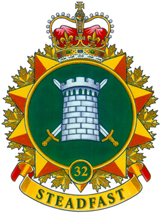
The Queen's Own Rifles of Canada is a Primary Reserve regiment of the Canadian Armed Forces, based in Toronto. The regiment is part of 4th Canadian Division's 32 Canadian Brigade Group. It is the only reserve regiment in Canada to currently have a parachute role. The regiment consists of the reserve battalion, the Regimental Association, and the Regimental Band and Bugles. The official abbreviation is The QOR of C, but the name is often abbreviated to QOR.

The 1st Canadian Division is a joint operational command and control formation based at CFB Kingston, and falls under Canadian Joint Operations Command. It is a high-readiness unit, able to move on very short notice, and is staffed and equipped to meet Canada’s military objectives to counter any potential threat.

The 4th Canadian Division is a formation of the Canadian Army. The division was first created as a formation of the Canadian Corps during the First World War. During the Second World War the division was reactivated as the 4th Canadian Infantry Division in 1941 and then converted to armour and redesignated as the 4th Canadian (Armoured) Division. Beginning in 1916 the division adopted a distinctive green-coloured formation patch as its insignia. In 2013 it was announced that Land Force Central Area would be redesignated 4th Canadian Division. It is currently responsible for Canadian Army operations in the Canadian province of Ontario and is headquartered at Denison Armoury in Toronto.

The 5th Canadian Division is a formation of the Canadian Army responsible for the command and mobilization of most army units in the provinces of New Brunswick, Nova Scotia, Prince Edward Island and Newfoundland and Labrador; as well as some units in Kingston, Ontario. The division is recognized by the distinctive maroon patch worn on the sleeve of its soldiers.

The Governor General's Horse Guards is an armoured cavalry regiment in the Primary Reserve of the Canadian Army. The regiment is part of 4th Canadian Division's 32 Canadian Brigade Group and is based in Toronto, Ontario. It is the most senior reserve regiment in Canada, and the only household cavalry regiment of Canada's three household units.
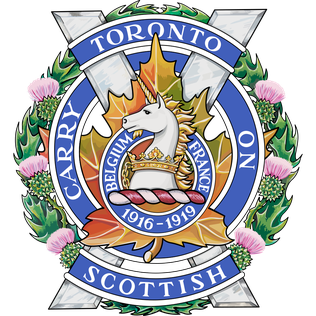
The Toronto Scottish Regiment (Queen Elizabeth The Queen Mother's Own) is a Primary Reserve infantry regiment of the Canadian Army based in Toronto, Ontario, Canada. The regiment was first formed in 1915 as the 75th (Mississauga) Battalion, CEF, and was later reorganized several times before being officially designated as The Toronto Scottish Regiment (Queen Elizabeth The Queen Mother's Own).

The Lorne Scots is a Primary Reserve infantry regiment of the Canadian Army. It is part of the 4th Canadian Division's 32 Canadian Brigade Group.
Beginning with establishment of Fort Calgary in 1875, the city of Calgary, Alberta, has had some degree of permanent military presence throughout its history.

The 7th Canadian Infantry Division was an infantry division of the Canadian Army, mobilized in the spring of 1942 and assigned for home defence within Atlantic Command, during World War II.
A service battalion is a unit of the Canadian Armed Forces (CAF) that provides combat service support to a brigade group and its elements.

The Primary Reserve of the Canadian Armed Forces is the first and largest of the four sub-components of the Canadian Armed Forces reserves, followed by the Supplementary Reserve, the Cadet Organizations Administration and Training Service and the Canadian Rangers.
32 Combat Engineer Regiment is the Primary Reserve unit of the Royal Canadian Engineers in Toronto, Ontario, Canada. It is assigned to 32 Canadian Brigade Group, part of 4th Canadian Division.

41 Canadian Brigade Group is a Canadian Army formation of the 3rd Canadian Division. The formation is composed of Army Reserve units within the province of Alberta and the Northwest Territories. The headquarters of the brigade is in Calgary.
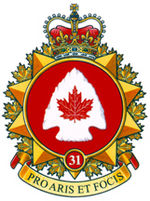
31 Canadian Brigade Group is part of the 4th Canadian Division, under the Canadian Army. It encompasses the southwestern portion of Ontario, and is headquartered in London, Ontario. The 31 CBG area of responsibility stretches from Hamilton to Windsor. The brigade has approximately 2,400 soldiers. Colonel Chris Brown, CD is Commander of 31 Canadian Brigade Group. The brigade sergeant-major is Chief Warrant Officer Mike Coit, CD.

39 Canadian Brigade Group is a Canadian Forces formation of the Canadian Army under the 3rd Canadian Division. The brigade group is composed of Canadian Forces (CF) Primary Reserve units, all of which are based within the province of British Columbia. 39 CBG Headquarters is located at the Major-General B.M. Hoffmeister OC, CB, CBE, DSO Building, 1755 West 1st Avenue, Vancouver.
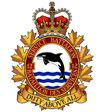
12 (Vancouver) Service Company is a Canadian Army Primary Reserve combat service support unit of the Canadian Forces that can fight in a defensive role and provides logistical support to the units within 3rd Canadian Division's 39 Canadian Brigade Group, which consists of all Primary Reserve units in British Columbia.

The page contains the current structure of the British Army. The British Army is currently being reorganised to the Future Soldier structure.

33 Service Battalion is a Canadian Forces Primary Reserve unit with three companies located in northern and eastern Ontario - at the M.L. Troy Armoury in North Bay, Pine Street Armoury in Sault Ste Marie, and the Major Holland Armoury in Ottawa. The battalion is under command of 33 Canadian Brigade Group, itself commanded by the 4th Canadian Division. The battalion is made up of officers and soldiers primarily from the Royal Canadian Logistics Service and the Royal Canadian Electrical and Mechanical Engineers providing Combat Service Support to 33 Canadian Brigade Group and other military organizations in eastern and northern Ontario - by means of transportation, supply, administration, food services, and mechanical repair and recovery activities.
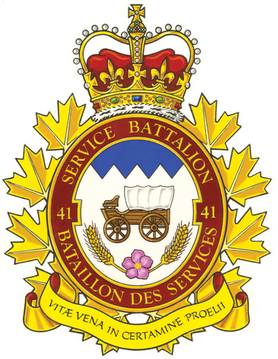
41 Service Battalion is a Canadian Army Primary Reserve combat service support unit with three companies located at Currie Armoury in Calgary and at Debney Armoury in Edmonton, Alberta. The battalion is under the command of 41 Canadian Brigade Group, itself part of the 3rd Canadian Division, one of four region-based Canadian Army divisions. The battalion is made up of officers and soldiers primarily from the Corps of Royal Canadian Electrical and Mechanical Engineers and the Royal Canadian Logistics Service and provides transport, maintenance, supply, food services and administrative support to 41 Canadian Brigade Group and other military elements in Alberta.

32 Service Battalion is a reserve combat service support (CSS) unit within the Canadian Army. The unit is formed under command of 32 Canadian Brigade Group in the 4th Canadian Division. The Service Battalion is composed of soldiers from the Corps of Royal Canadian Electrical and Mechanical Engineers and Royal Canadian Logistics Service to include: vehicle technicians, weapons technicians, cooks, financial service administrators, human resource administrators, material management technicians and mobile support equipment operators. It is located at LCol George Taylor Denison III Armoury in Toronto, Ontario.
